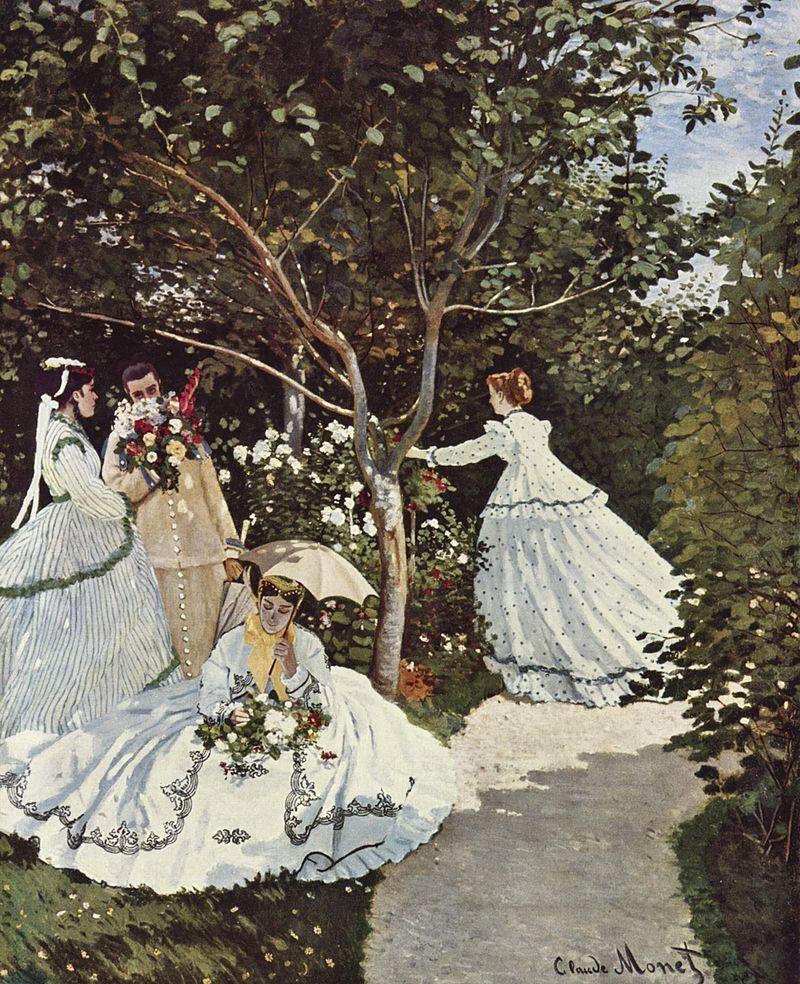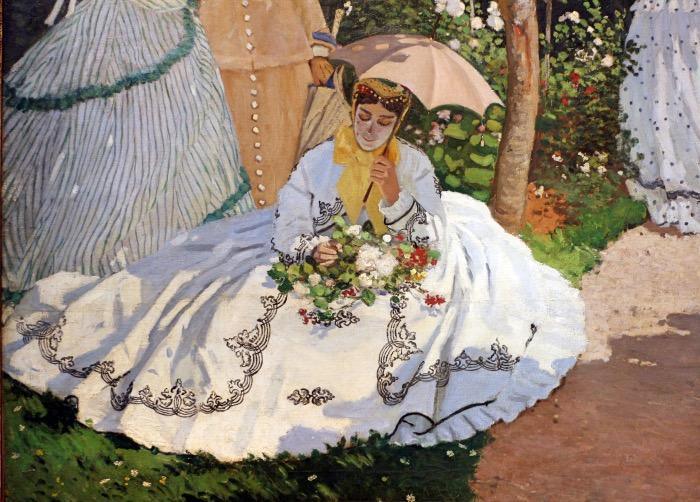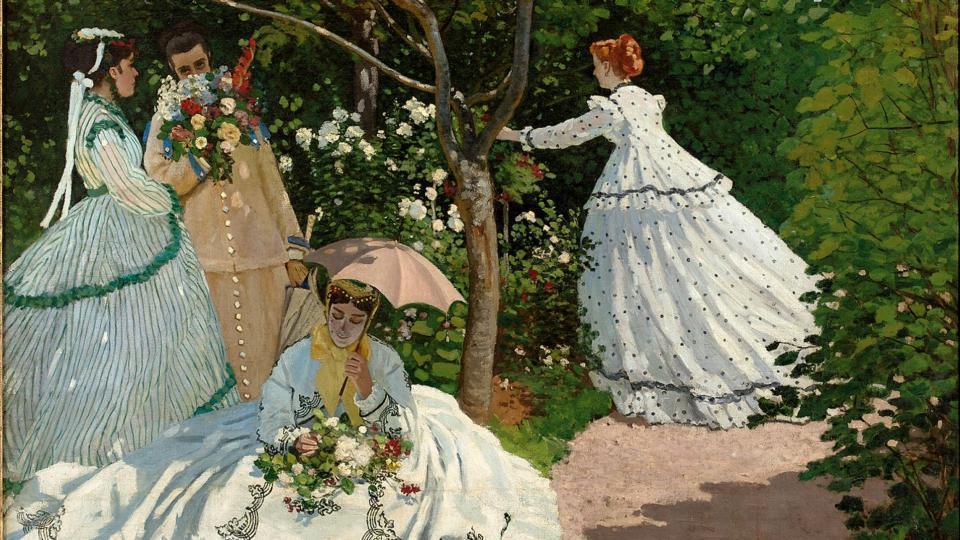Description
Women in the Garden was a great achievement as one of Monet's first plein air works, the challenges the painting presented with its sheer size were immense, but he overcame them to create this impressive masterpiece.
Monet began painting the garden of the property he rented in the suburbs of Paris in 1866. The work was so large that a pulley system was required along with a trench, into which the painting could be lowered onto the pulley, so that he could work on the upper areas of the canvas. The objective of this work was to discover how the figures, within a landscape, could give the impression that the air and light moved around them. He organized his target by painting shadows and light with the color used on purpose, sunlight filtering through foliage, and glow-in-the-dark highlights.
Camille is known to have posed for the three figures on the left of the piece, but the faces of all the figures look vague and are not composed in a portrait style.
Monet skillfully interpreted the white of the dresses, anchoring them firmly in the structure of the composition, a symphony of greens and browns, provided by the central tree and the path.
Monet was greatly inspired by the garden of Sainte-Adresse and created several paintings centered on this place. Women in the Garden shows a woman dressed in contemporary white, capes and patterns along with a matching parasol.
Monet entered Women in the Garden at the 1867 Paris Salon, only to have it rejected as incompetent by the committee, who liked the work's visible brushstrokes and lack of monumental subject matter. "Too many young people think of nothing but continuing in this abominable direction," a judge is believed to have said of the play. "It's about time to protect them and save the art!"
Monet kept the painting for the rest of his life, frequently showing it to those who visited him in Giverny in his later years. In 1921, when the French government was negotiating the distribution of his works, he demanded—and received—200,000 francs for the work that was once rejected. It is now part of the permanent collection of the Musée d'Orsay in Paris.






